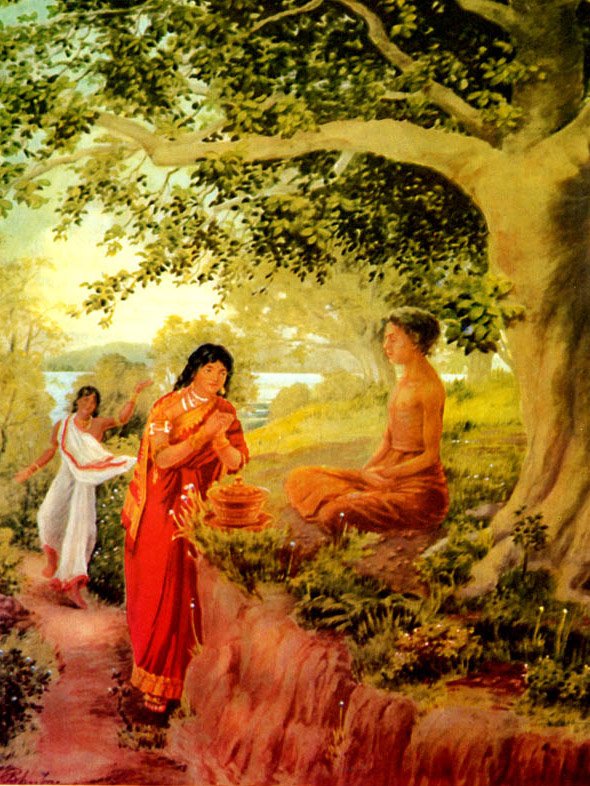Apadana commentary (Atthakatha)
by U Lu Pe Win | 216,848 words
This is the English translation of the commentary on the Apadana (Atthakatha), also known as the Visuddhajana-Vilasini. The Buddhist stories known as apadanas refer to biographies of Buddhas, Buddhist monks and nuns. They are found in the Pali Canon (Khuddaka Nikaya), which is the primary canon of Theravada Buddhism. Alternative titles: Visuddhaja...
Commentary on Biography of the thera Padasaññaka
Stanzas starting with Akkantañ ca padam disvā constitute the biography of the venerable thera Padasaññaka. This one also, having done devoted service toward former Buddhas, accumulating meritorious deeds, conducive towards escape from rounds of rebirth (vaṭṭa) in any and every existence, wherever he sprang up, was reborn in the house of a devotee endowed with pious faith at the time of the Glorious One Tissa; on having attained the age of intelligence, he came to have pious faith in the three gems, saw the foot-shrine (padacetiyam), shown by the Glorious One to him out of compassion for him, became pleasingly pious and hair-bristled, and made in abundance of paying homage, giving reverential offering, and so on, On account of that self-same good act of merit in that very fertile field, he passed away thence and was reborn in heaven. Having enjoyed divine bliss there, he was reborn subsequently among human-beings, experienced all kinds of human prosperity, and when this Buddha arose, he was reborn in a wealthy family; on growing up, there sprang up in him pious faith, renounced the world, and became an arahat, not long afterwards, even. He was well-known as Padasaññaka thera, by the name of his meritorious deed done previously.
5. One day, having recollected his own former deed, he uttered a stanza starting with Akkantañ ca padamdisvā, in order to make manifest the deed done by him formerly. There, akkantam (treading upon), tread upon and shown; the going of all Buddhas at all times was but above four fingers; this one, however, knowing the state of his being endowed with pious faith Buddha showed him the foot-shrine with the idea "Let this one see this"; therefore, he developed pious faith in that shrine and made his such personal reverence as paying homage, reverential offering and so on; thus, is the meaning. The rest is but easy in meaning everywhere.
The Commentary on the biography of the thera Padasaññaka has ended.
